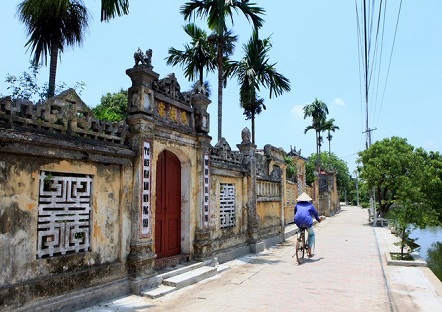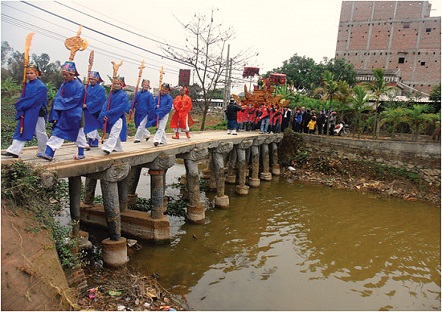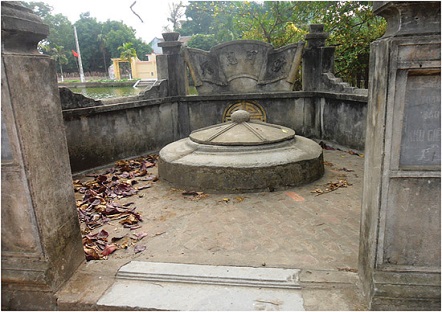Nom village is a peaceful ancient village which bring tourist a realistic imagine traditional Vietnamese life in the past.
Address: Nom Village in Dai Dong hamlet, Van Lam district, Hung Yen province lies just over 30 kilometers east of Hanoi. The village was formed at the beginning of the Common Era, according to a stele preserved in Nom Pagoda.

One of the best things about northern Vietnam is that while most provinces are rapidly modernizing, villages that boast histories spanning centuries can still be found here and there. What's better, not only their architecture but also their ambiance is almost intact.

As is the case with many other Vietnamese villages, the history of Nom Village’s origins are associated with legends of spirits; among them many that contain fabulous mythical elements. According to hagiographies extant in Nom Village’s communal house, during the Western Han Dynasty, a girl surnamed Pham was famed for her beauty but refused to marry. Since she was enchanted by Buddhism, she went to Phap Van (Dharma Cloud) Pagoda to reside. Once, when she went out to bath in Nguyet Duc River, which lies adjacent to the village, the sky suddenly turned dark and a tempest broke out. A river serpent jumped out and coiled around her. Terrified, she ran off to the pagoda and fainted. In her delirium, she dreamed that she swallowed the moon down into her belly. She became pregnant and gave birth to a son of uncanny ability and countenance, whom she named Tam Giang.
Tam Giang grew up to become a general for the Trung sisters in the rebellion against Han Dynasty domination in 40 C.E. After the successful rebellion, Tam Giang returned to Nom Village, where he had garrisoned, and established a livelihood. Three years later, the Han army invaded. Tam Giang gathered together an army and went to battle, but was defeated and retreated back to Nom Village. As the enemy pursued him, Tam Giang committed suicide along with his mother and wife at Nguyet Duc River. Learning that Tam Giang had died, the villagers built a shrine for him and venerated him as the village tutelary spirit. Thousands of years may have passed, but Nom Village retains its image as a traditional Vietnamese village.

The center of Nom Village is the communal house. Before the road leading into the communal house is a pond several decameters wide and approximately 200 meters long. In the village over a dozen ancient houses and seven altars of the various families remain. Most prominent is the home of Phung Van Long, which was built about 200 years ago, according to documents from Hung Yen province’s department of culture, sports and tourism. The house includes fully intact wooden pillars and columns, on which exquisite carvings remain.
The village is connected to a market and a Buddhist pagoda by a stone bridge called Nom Bridge, which extends across the Nguyet Duc River. According to materials from the People’s Committee of Dai Dong Hamlet, the bridge was built in 1860; it is almost 20 meters long and 2 meters wide in 9 sections. Each section is made up of a slab of stone with two dragon engravings on both ends.

The village is connected to a market and a Buddhist pagoda by a stone bridge called Nom Bridge, which extends across the Nguyet Duc River. According to materials from the People’s Committee of Dai Dong Hamlet, the bridge was built in 1860; it is almost 20 meters long and 2 meters wide in 9 sections. Each section is made up of a slab of stone with two dragon engravings on both ends. This bridge is unique and rare surviving intact after more than 200 years.
(84-63) 3 826042 – (84-63) 3 511142
No 54 Nguyen Dinh Chieu, Ham Tien Central Mui Ne Beach Binh Thuan Vietnam
523 To Hien Thanh District 10 Ho Chi Minh City Vietnam
Ha Long Halong City Quang Ninh Vietnam
A13 Hung Thong 2 Halong City Quang Ninh Vietnam




